-

Lars Christensen’s nine expeditions with the vessels Odd, Norvegia, and Torshavn made important discoveries in the Southern Ocean.
-

It was the 30-year-old pilot Bernt Balchen from Kristiansand who flew the plane safely from the Ross Ice Shelf to the South Pole and back to the Ross Ice Shelf.
-

When the glacier reaches the sea, the ice starts to float. This huge, thick floating tongue of ice is called an ice shelf.
-
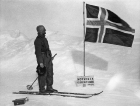
Norwegian pilots were pioneers in Antarctica; they flew over vast areas taking photographs so it would be possible to construct maps based on aerial photography.
-

Antarctica is a continent with no permanent residents, but many researchers stay for short or long periods at one of the 75 research stations that have been established in Antarctica.
-

Leopard seals are probably the penguin’s worse enemies.
-
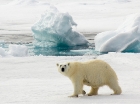
..and that there are many differences between the two polar regions at either end of the Earth. Here are a few of them.
-
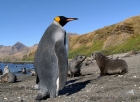
All Norwegian activities in Antarctica must follow the regulations in the protocol on protection of the Antarctic environment, and be carried out in congruence with the Antarctic Treaty.
-

Dry, thin, freezing cold air and a sterile immensity of snow makes the Antarctic Plateau hostile to humans. It can also turn it into an atmospheric display of beauty.
-
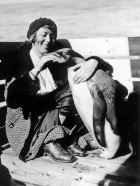
In the 1930s, attempts were made to introduce new animal species to regions where they were not naturally represented. Reindeer were shipped from Norway to South Georgia, and penguins were imported to Norway.
-
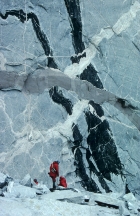
About 500-600 million years ago, the supercontinent Gondwana was formed. This ancient continent consisted of Antarctica, Africa, India, Australia and South America.
-
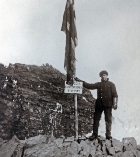
But like of the rest of Antarctica, Peter I Øy (Peter I Island) has long been covered in snow and ice.
-
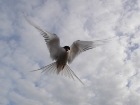
The Arctic tern flies all over the world. It nests in Svalbard and flies south to spend the “winter” in the pack ice of the Southern Ocean – where it is summer at the time.
-

Amundsen arrived at the South Pole just a week shy of midsummer’s day. Or to be more precise: he arrived there almost in the middle of it.
-
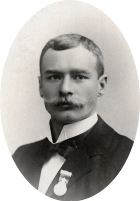
Sverre Helge Hassel (1876–1928) was born in Oslo. He went to sea at an early age and trained to the rank of first mate and captain.
-
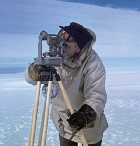
The vast and level Antarctic Plateau offers few features to feast the eyes on and none to navigate by. Yet finding one’s way across is really quite simple today, when aided by the satellites of the Global Positioning System (GPS). Finding the South Pole in 1911 was an entirely different story.
-
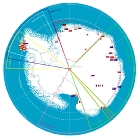
At the end of World War II, seven countries claimed sovereignty in Antarctica. Some of these claims were partly overlapping and there was a risk of international conflict that involved the superpowers.
-

Ice streams, as these rivers are called, transport ice from the inner regions of Antarctica to the coast, where they calve as icebergs or melt under ice shelves.
-

The diet of a crabeater seal consists mainly of krill (90%).
-
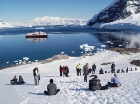
Cruises to Antarctica have become increasingly popular in recent years, but tourism has side effects on the pristine and fragile environment.
-
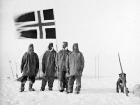
Olav Olavsen Bjaaland (1873–1961) was born in Morgedal in Telemark – the cradle of ski sport – and was one of Norway’s best skiers. In 1902 he won the King’s Cup in Holmenkollen.
-

Seals fitted out with satellite transmitters have collected climate data from the polar regions.
-

Doctors use x-rays to peer inside the human body. Glaciologists use radars to peer into and under the deep blue ice – and to ensure safe travel in Antarctica.
-
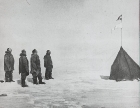
On a continent that is 98% solid ice it isn’t easy to leave tracks, but there are 80 cultural heritage sites on the official list of historic places and mounuments in Antarctica, and 11 of them are Norwegian.
-

The Norwegian whaling pioneer Lars Christensen sent out nine expeditions to Antarctica between 1926 and 1945. Four are known as the Norvegia expeditions. During these missions, scientific investigations were carried out and unknown territories were charted; this helped ensure that Norway now has sovereign territories in the southern hemisphere.
-
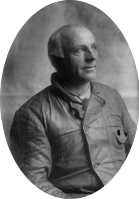
Oscar Adolf Wisting (1871–1936) was head-hunted for the expedition to the South Pole after having test-flown kites designed to lift a man.
-
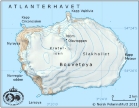
Bouvetøya is a Norwegian island in the South Atlantic. The closest land mass is Dronning Maud Land in Antarctica, 1 700 km farther south.
-

The countries with activities in Antarctica have agreed that all waste produced during expeditions and at research stations must be sorted and shipped off the continent.
-
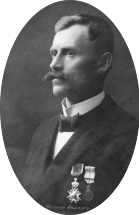
Helmer Hanssen (1870–1956) from Vesterålen in northern Norway accompanied Roald Amundsen on three of his expeditions.
-
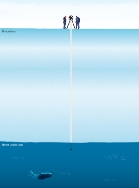
Nearly 10% of the “land” area of Antarctica is ice shelves. Researchers are currently studying one of the largest of these, Fimbulisen, to find answers to important questions about the Earth’s climate.
-
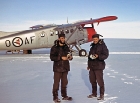
In 1939, Norway annexed part of the Antarctic continent, Dronning Maud Land. In 1956, to ensure that this claim would be honoured, it was time to show Norwegian presence on the continent.
-

The weather changes dramatically as you move from the inland to the coast of Antarctica, rather like what you see in Norway, but more extreme.
-

But it used to be common practice to bring dogs along to Antarctica. Dogs served as draught animals and helped with transport of supplies and equipment.
-

Liv Arnesen from Bærum made international headlines when – as the first woman ever – she skied alone to the South Pole without any support or supplies from the outside world. Arnesen set out from Hercules Inlet at the southern end of the Weddell Sea 5 November 1994. She reached the South Pole fifty days later, on Christmas Eve of the same year, after having skied 1200 km. She was picked up and flown out of the continent.
-
Winter International Film Festival Antarctica (Wiffa) is an annual film festival open exclusively to those who spend the entire winter in Antarctica.
-

When whaling in the Southern Ocean began, in the early 1900s, the need for maps of relevant sea areas and coastlines became pressing.
-
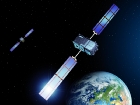
Since time immemorial we humans have found our way by looking to the heavens; we navigated with the help of the sun and the stars. Today, satellites in space tell us where in the world we are.
-

Krill is a key component of the Antarctic marine ecosystem and the main source of nourishment for several species in the ecosystem.
-

Antarctica can be described as an icy wasteland. Over 98 % of the continent is covered in ice and snow, and with its 14 million square metre area, the continent holds 90 % of all the ice on our planet!
-

The Norwegian-British-Swedish Antarctic expedition of 1949-52 was the first truly international expedition to Antarctica.
-

More specifically in the Southern Ocean, from which incredible amounts whale oil were extracted between 1905 and 1940.
-
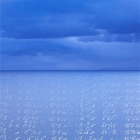
On the walls of Norway’s most isolated research station – Troll – you can find exquisite works of art created by Norwegian artists.
-
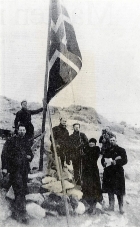
Caroline Mikkelsen was the first woman to set foot on the Antarctic continent.
-

But an ice-free Antarctia would never come to pass unless the entire continent were to move, and that would take millions of years. This means that the Antarctic continent’s contribution to global sea level is much less than 60 meters. But figuring out just how much less is a difficult task that the world’s scientists are currently striving to accomplish.
-
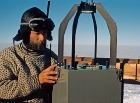
For over a century, Norwegians have been doing research in Antarctica. It started with Carsten Borchgrevink, who outfitted an expedition team consisting of Norwegians and scientists in 1898. The expedition received its financing from England.
-

The two words – Sørpolen and Sydpolen – both mean the same thing, but have slightly different connotations. Back at the time of Roald Amundsen, the southernmost point of the globe was usually called Sydpolen. Today it is usually referred to as Sørpolen. Languages are not static, but change over time.
-
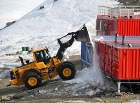
The driest, coldest, most sparsely inhabited continent on our planet has plenty of water – but it’s all frozen.
-

At the Norwegian station Troll in Dronning Maud Land, as many as eight people spend the entire winter each year. The overwintering team is alone at the station for the eight long, dark months of winter. During this period, no planes fly to or from Troll.
-

The two Sami went along to care for the dogs on an English expedition that overwintered in Antarctica from 1898 to 1900.
-

In 2007, researchers discovered several lakes under the Recovery ice stream in Dronning Maud Land. Satellite data suggested that the combined area of these lakes was nearly that of the Antarctica’s largest lake, Vostok (which in turn is almost as big as Lake Ladoga in Russia). However, radar measurements made on the ground have now shown that these lakes, buried under 3.5 km of ice, are much smaller than first believed.
-
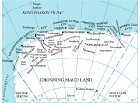
The name Arctic comes from the Greek word Arktos, which means bear. The bears in question are not polar, but celestial: the Great and the Little Bear, constellations visible only in the Northern Hemisphere. Antarktikos – Antarctica – is thus the opposite of “the land of the bear” and is situated on the other side of the planet.
-

Troll is Norway’s research station in Antarctica and is situated in the Norwegian sector which is named Dronning Maud Land.
-
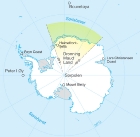
Dronning Maud Land is the Norwegian claim sector in Antarctica, annexed 14 January 1939. The area occupies one-sixth of the Antarctic continent and is almost seven times larger than Norway. It is named after Queen Maud of Norway (1869–1938).
-
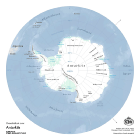
The Antarctic ice cap contains about 91% of all the ice in the world and about 86% of all freshwater that occurs in the form of ice. But despite all this freshwater, Antarctica is considered one of the most arid places on Earth.
-

Antarctica is the only continent in the world where there has never been an armed conflict. To gain admission into Antarctic cooperation, a nation must actively carry out research there.
-
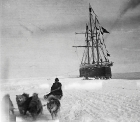
When Roald Amundsen set sail from Kristiansand 10 August 1910 on his way to the South Pole, everyone believed he was on his way to the North Pole.
-

The centennial celebrations of the first human visit to our planet’s southern extreme are taking place on December 14 this year. However, Amundsen himself believed the date to be December 15 when he arrived at the South Pole in 1911.